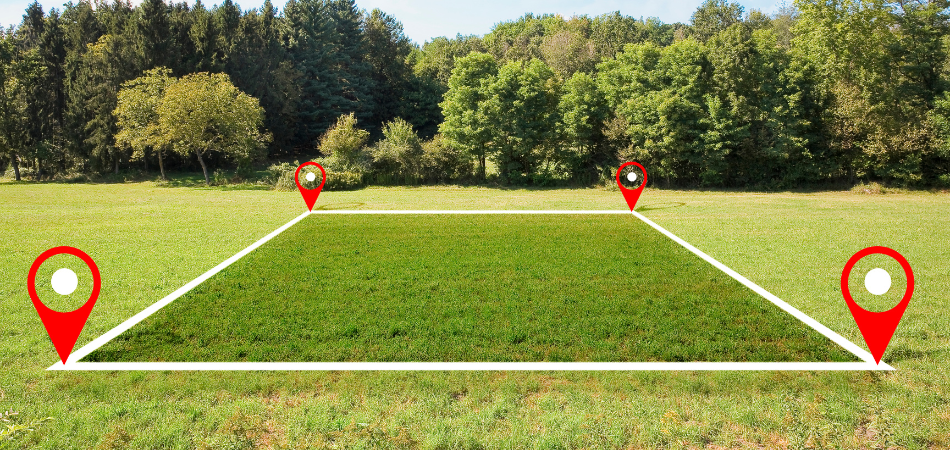
How to Donate Land to Charity
Before you think about selling your land and pocketing the cash, consider donating it to charity. While donating land to a nonprofit may sound like a noble yet unwise investment, it’s one that, shockingly, can benefit you much more from a tax and financial perspective. Not to mention the priceless experience it brings from giving back to your community and helping those in need.
In this article, you’ll learn how donating your land to charity works and the significant tax savings for which your donation makes you eligible.
What is it called when you donate land?
Donating land to charity has many different names and is structured in many different ways. The most common methods include:
- land donation
- donation of the remainder interest to land with a life estate
- donation by devise
- conservation easement
A land donation, as it sounds, is when you convey the title of your property over to a charitable organization. They become the new owners of the property, assuming all the financial responsibilities – from property taxes to upkeep. They also use the land as they see fit, whether that includes selling it, renting it out, or using it in some other way to generate income for their charitable activities.

Donating a remainder interest to land with a life estate is essentially a gift of future ownership to a property. The current owner or their heirs can remain on the land during their lifetime and use the land as they desire. However, once an agreed-upon period of time passes, the land is automatically gifted to a designated nonprofit organization.
Bequeathing land, or donating land by devise, is when land is gifted to a charity through a will. Similar to gifting a remainder interest in land, by leaving a property in a will, the property owner gets to enjoy the property during their lifetime. The key difference is this same privilege typically does not pass down to the property owner’s heirs.
Lastly, donors who want to continue to use the land but donate certain property rights to restrict how it is used in the future have the option of using a conservation easement.
What are conservation easements?
A conservation easement is a legally binding agreement in which a property owner willingly gives up some or all of their private property rights to a land trust or government agency. This is in exchange for the agency's promise to preserve the land and its natural, scenic, or historical features.

For example, suppose you own 60 acres of wild farmland that could be developed into a remote ski resort but don’t want that to happen. In that case, you can convey a conservation easement that limits all future use of the site to just agriculture. The organization to which you grant the easement will ensure your wishes are upheld, and the land stays protected forever.
Typically with a conservation easement, the property owner continues to own the land and pay for any related maintenance. Furthermore, depending on the type of conservation easement a property owner agrees to, the current land owner or their heirs may continue to use the land as they please. They may also sell, rent or lease the land to whomever they choose. However, the limitations imposed on the property run into perpetuity, no matter who subsequently owns or uses it.
What are the benefits of conservation easements?
There are many benefits to using conservation easements to donate land.
For one, conservation easements offer the most effective strategy to protect land from further development. Urban and suburban sprawl are on the rise, and through conservation easements, a land donor can protect precious nature and wildlife.
There are also special tax benefits that a donor can take advantage of when executing a conservation easement. You can avoid capital gains tax that you would otherwise have to pay if you decided to sell the property outright, which usually runs anywhere from 10% to 30% of the profit you make on a sale, depending on your state.
Additionally, your conservation easement is considered a charitable donation, which translates into a sizable tax deduction that you can take and use now into the future.
Specifically, you are entitled to a deduction equal to the loss in fair market value you experience when executing a conservation agreement and giving up a higher-valued use of the property.
Referring back to our farmland example, if you purchased the farmland years ago for $500,000, but the land is now worth $1.5 million (because a ski resort could be built there), through a conservation easement you become eligible to take up to $1,000,000 in tax deductions because that is the value in the land you have now forfeited.
You could then write off up to 50% of your adjusted gross income each year until the entire $1 million in deductions is exhausted or 15 years have gone by, whichever occurs sooner.
Compared to the alternative of selling land and having to pay a capital gains tax, many people opt to donate land through conservation easements for the long-term financial upside.
How to donate land to charity?

Donating land to a charitable organization or a land trust can be a complex process, especially through a conservation easement. It involves drafting key legal paperwork, having your land appraised, finding an eligible land trust or nonprofit to enforce the easement, and consulting with a CPA to maximize your tax deduction.
Fortunately, Giving Property specializes in working with donors to make the process as easy as possible. If donating your land is something you’d like to consider, give us a call at 844-277-HOME or contact us by filling out our form at https://givingproperty.org/contact-us.
**This article is for informational purposes only and does not constitute formal advice. Individual tax situations may vary so please contact your tax advisor if needed.